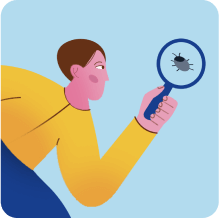Well-designed test cases are like having a good insurance policy. They catch issues before they become expensive problems. According to recent industry data, poor software quality costs businesses a staggering $2.41 trillion annually. That’s not a typo—trillion with a T.
Whether you’re new to QA or a seasoned test engineer looking to sharpen your skills, this guide breaks down the essential test case design techniques you should have in your toolkit. No fluff, just practical approaches you can start using today.
Understanding Test Case Design Techniques
Test case design techniques are systematic methods for creating test scenarios that help confirm your software works as expected. They give you a framework to build tests that efficiently find defects while minimising unnecessary test cases.
Think of these techniques as different lenses through which you can view your application, each revealing potential issues the others might miss.
Key objectives of test case design techniques:
- Maximise bug detection with minimal test cases
- Provide structured approaches to testing complex systems
- Ensure critical paths and features receive adequate coverage
- Create repeatable, consistent testing processes
- Balance testing thoroughness with time constraints
- Reduce redundant or low-value tests
Good test design isn’t about testing everything—it’s about testing the right things. These techniques help you focus your efforts where they’ll have the biggest impact.
I find test cases helpful and would be sad to see them go because I frequently use them to understand the functionality of a product that I may not have exposure to at the company. Plus I tend to forget specifics of a feature that I haven't tested in a while so I find the documentation in the form of test cases to be really helpful.
Categories of Test Case Design Techniques
Test case design techniques generally fall into three main categories, each with different approaches and strengths:
Black-box Testing Techniques
- Focus on testing functionality without looking at internal code
- Treat the software as a “black box” where only inputs and outputs matter
- Perfect for QA teams who may not have deep coding knowledge
- Test from the user’s perspective
White-box Testing Techniques
- Examine the internal structure and code
- Require an understanding of the application’s inner workings
- Help verify that all code paths work correctly
- Typically used by developers or technically skilled testers
Experience-based Techniques
- Use the tester’s skills, intuition, and domain knowledge
- Less formal but often highly effective at finding unexpected issues
- Complement more structured techniques
- Particularly valuable when time is limited
The most effective testing strategies combine techniques from all three categories, creating multiple layers of validation to catch different types of issues.
For an effective test case management, you need a modern solution that will take most of your work off the plate. Nowadays test management systems (TMS) offer AI-powered features that will do that for you, and perfectly.
A prime example of these solutions is aqua cloud, an AI-powered test management system that is specifically designed to turn your test case management into a breeze. With aqua, you can create a detailed test case in a few seconds, 98% faster compared to the manual test case creation. All you need to do is just giving the AI-copilot your requirement (which you can also create with aqua cloud in a few seconds). Now you can create test cases with aqua’s AI copilot using different techniques, so you never lose the flexibility and are never limited to one method. Apart from these, if you need limitless synthetic test data, aqua cloud can also deliver that in a fraction of a second. 100% test coverage, visibility, traceability, customisable reports, Jira and Azure DevOps integrations, a centralised repository, native bug-tracking integration – all of these make aqua cloud a standalone solution for all your test management efforts.
Save up to 98% of time on test case creation
Detailed Overview of Key Test Case Design Techniques
1. Boundary Value Analysis (BVA)
Boundary Value Analysis focuses on testing at the edges of valid input ranges. It’s based on the principle that errors tend to occur at the boundaries of input domains rather than in the center.
Think about it: How many bugs have you seen that happen only when users enter the maximum or minimum allowed value? That’s why BVA targets those boundary areas.
How it works: For a field that accepts values between 1 and 100, your boundary values would be:
- Just below the lower boundary: 0
- At the lower boundary: 1
- Just above the lower boundary: 2
- Just below the upper boundary: 99
- At the upper boundary: 100
- Just above the upper boundary: 101
Why it’s effective:
- Catches common programming mistakes around limits and constraints
- Efficiently identifies edge case issues with minimal test cases
- Often finds bugs that regular testing misses
Example in action: Imagine testing an age field in a form that accepts ages 18-65:
|
When to use it: BVA works particularly well for numerical inputs, dates, text fields with length restrictions, and any feature with clearly defined limits.
I usually follow a mnemonic to structure my testing:
Negative - anything outside the bounds of what is expected
Boundary - negative lengths; excessive lengths
Validation - if any fields are required
2. Equivalence Class Partitioning
Equivalence Class Partitioning (ECP) divides input data into groups (or classes) that should be treated the same way by the system. The theory is simple: if one value in a class passes, all values in that class should pass.
This technique helps you test efficiently by using one representative value from each class instead of testing every possible input.
How it works:
- Identify classes of inputs that should behave similarly
- Choose representative values from each class
- Design test cases using these representative values
Why it’s effective:
- Dramatically reduces the number of test cases needed
- Provides good coverage with minimal effort
- Works well alongside boundary value analysis
Example in action:
For a discount code field that accepts alphanumeric codes between 5-10 characters:
| Equivalence Class | Representative Value | Expected Behavior |
|---|---|---|
| Valid (5-10 chars) | “CODE25” | Code accepted |
| Invalid (too short) | “ABC” | Error message |
| Invalid (too long) | “DISCOUNT1234” | Error message |
| Invalid (special chars) | “CODE@25” | Error message |
Instead of testing dozens of possible codes, you only need four tests to verify the system’s behavior.
When to use it:
ECP works best when you have clear input ranges or categories and need to reduce test case volume while maintaining coverage.
3. Decision Table Testing
Decision Table Testing excels at handling complex business rules and conditions. It creates a structured way to test scenarios with multiple inputs affecting the outcome.
This technique is particularly handy when you need to test features with lots of “if-then” logic.
How it works:
- Identify all conditions (inputs) and actions (outputs)
- Create a table with all possible combinations of conditions
- Determine the expected actions for each combination
- Create test cases based on the table
Why it’s effective:
- Ensures all condition combinations are tested
- Makes complex logic more understandable
- Helps identify missing requirements
- Creates comprehensive test coverage
Example in action:
Testing a loan approval system with multiple criteria:
| Conditions | Case 1 | Case 2 | Case 3 | Case 4 |
|---|---|---|---|---|
| Credit Score > 700 | Yes | Yes | No | No |
| Income > $50K | Yes | No | Yes | No |
| Actions | ||||
| Loan Approved | Yes | No | No | No |
| Request Additional Documents | No | Yes | Yes | No |
| Application Rejected | No | No | No | Yes |
This table shows all possible combinations and expected outcomes, making it clear what to test.
When to use it:
Decision table testing works best for features with complex business rules, multiple conditions affecting outcomes, and intricate logic flows.
4. State Transition Testing
State Transition Testing focuses on systems that behave differently based on their current state and the events that trigger changes between states.
Think apps with distinct modes, workflows with sequential steps, or any feature where previous actions affect current behavior.
How it works:
- Identify all possible states of the system
- Determine events that cause transitions between states
- Create a diagram showing states and transitions
- Design tests to verify each transition works correctly
Why it’s effective:
- Catches bugs related to incorrect state changes
- Verifies the system responds correctly to sequences of actions
- Helps visualize complex workflows
Example in action:
For a document approval workflow:
| Current State | Event | Next State | Test Case |
|---|---|---|---|
| Draft | Submit | Pending Review | Submit draft document |
| Pending Review | Approve | Approved | Approve pending document |
| Pending Review | Reject | Draft | Reject pending document |
| Approved | Archive | Archived | Archive approved document |
| Approved | Revoke | Draft | Revoke approval |
This approach ensures you test all possible paths through the workflow.
When to use it:
State transition testing is perfect for testing:
- User workflows with multiple steps
- Systems with different operational modes
- Features where the system “remembers” previous actions
5. Error Guessing
Error Guessing isn’t as structured as other techniques, but it’s incredibly valuable. This approach relies on your experience and intuition to predict where bugs might be hiding.
It’s the testing equivalent of “I’ve seen this break before, let me check if it breaks here too.”
How it works:
- Draw on past experience with similar applications
- Think about where defects typically occur
- Create test cases targeting these potential problem areas
- Try unexpected inputs or uncommon usage patterns
Why it’s effective:
- Leverages your QA expertise and institutional knowledge
- Can find issues that structured techniques miss
- Requires minimal preparation
- Often catches “real-world” issues
Common error guessing test cases:
- Empty strings or null values
- Extremely large numbers
- Special characters in text fields
- Rapid repeated clicks
- Concurrent user actions
- Unexpected navigation (back button, refresh)
- Network interruptions
- Extremely slow connections
When to use it:
Error guessing works great as a complement to more structured techniques. It’s particularly valuable when:
- Time is limited
- You have experience with similar applications
- You’re testing areas prone to defects
- User behavior is unpredictable
Choosing the Right Test Case Design Technique
Selecting the right test design techniques isn’t one-size-fits-all—it depends on your project, time constraints, and what you’re testing. Here’s how to choose what works best for your situation:
Project Risk Assessment
The higher the risk, the more rigorous your testing should be:
1. Low-risk projects: Features with minimal user impact or simple functionality
- Consider: error guessing, simple equivalence partitioning
- Example: Testing a minor UI update or low-traffic admin feature
2. Medium-risk projects: Features that impact users but aren’t critical
- Consider: boundary value analysis, decision tables, equivalence partitioning
- Example: Testing a new filter feature on a product listing page
3. High-risk projects: Core functionality or features with financial/security implications
- Consider: Combination of multiple techniques, more extensive coverage
- Example: Payment processing, authentication systems, data security features
Consider the feature type:
1. Input-heavy features (forms, search, filters)
- Best techniques: boundary value analysis, equivalence partitioning
- Why: These techniques excel at validating various input scenarios efficiently
2. Complex business logic
- Best techniques: decision tables, cause-effect graphing
- Why: They help manage combinations of conditions and ensure all scenarios are covered
3. Workflows and processes
- Best techniques: state transition testing
- Why: Perfect for testing sequential steps and status changes
4. APIs and integrations
- Best techniques: boundary value analysis, equivalence partitioning
- Why: These help verify how the system handles various data inputs and edge cases
Resource and time constraints:
Tight deadlines, limited resources
- Consider: error guessing, equivalence partitioning
- Focus on high-risk areas first
More time available
- Use a combination of techniques for more thorough coverage
- Consider exploratory testing to supplement your structured approach
Remember: the best approach often combines multiple techniques. You might use equivalence partitioning to define your test data scope, boundary value analysis to find edge cases, and error guessing to catch anything the structured approaches missed.
Now that you understand the different test design techniques, here’s the tricky part: which ones should you actually use for your project? Rather than guessing, try the interactive tool below. Just input your project parameters (complexity, risk, time budget, and feature type) and get instant recommendations on which techniques will give you the best results for your specific situation.
🎯 Interactive Test Strategy Builder
Modern Trends in Test Case Design
The testing landscape is evolving rapidly, with AI and automation changing how we approach test design. Here’s what’s trending in 2025:
AI-Powered Testing
AI is transforming test case design by:
- Generating test scenarios based on application behavior
- Identifying patterns in existing tests to suggest improvements
- Predicting potential failure points based on code changes
- Self-healing tests that adjust to UI changes
Many teams are seeing impressive results with AI assistance:
- Up to 40% reduction in manual errors
- 30% faster test refactoring
- Better coverage with less effort
For aqua cloud, these numbers are rooky. You can save up to 98% of time on test case creation, using different test case design techniques mentioned in this article. With all this flexibility and freedom, it takes a few seconds to create different types of test cases with AI. You can achieve 100% test coverage with fewer human mistakes and full traceability on your test cases. With the nested test cases feature, you can reuse the most valuable test cases; no need to create them again. Add seamless requirements and test data creation in 2 clicks, a 100% centralised repository for both your manual and automated tests, bug-tracking features, and automation integrations, and you have a recipe for 100% sped-up, effortless test management throughout SDLC.
Ignore ordinary benefits - choose a TMS that speeds up your test planning by 42%
Quality Engineering Mindset
There’s a shift happening from traditional QA to quality engineering:
- Testing is moving earlier in the development cycle (“shift-left”)
- QA teams are collaborating more closely with developers
- Quality is becoming everyone’s responsibility, not just the testing team’s
- Test design is happening alongside feature design, not after
This approach means test design techniques are being applied earlier, often during requirement discussions, to prevent bugs rather than just find them.
Real-World Validation
The testing community is increasingly recognizing the importance of real-world conditions:
- Testing on actual devices rather than just simulators
- Verifying performance across different network conditions
- Accounting for regional variations
- Creating test scenarios based on actual user behavior
The 2024 CrowdStrike incident—where a faulty update caused system crashes on 8.5 million Windows machines—highlights why controlled environment testing isn’t enough. Your test design should include scenarios that mimic real-world usage.
Practical Application of Test Case Design Techniques
Let’s look at how you might apply these techniques to a real-world feature—in this case, a user registration form:
The feature includes:
- Username (5-15 characters, alphanumeric only)
- Password (8+ characters, requiring uppercase, lowercase, and special characters)
- Email (valid format required)
- Age (must be 18+)
- Country selection (from dropdown)
Using multiple techniques together:
1. Equivalence Partitioning
For the username field:
1. Valid class: “testuser” (meets all requirements)
2. Invalid classes:
- Too short: “test”
- Too long: “testusertestuser123”
- Non-alphanumeric: “test_user!”
2. Boundary Value Analysis
For the username field:
- Just below minimum: 4 characters
- At minimum: 5 characters
- Just above minimum: 6 characters
- Just below maximum: 14 characters
- At maximum: 15 characters
- Just above maximum: 16 characters
3. Decision Table Testing
For password validation:
| Conditions | Case 1 | Case 2 | Case 3 | Case 4 | Case 5 |
|---|---|---|---|---|---|
| 8+ chars | Yes | No | Yes | Yes | Yes |
| Has uppercase | Yes | Yes | No | Yes | Yes |
| Has lowercase | Yes | Yes | Yes | No | Yes |
| Has special char | Yes | Yes | Yes | Yes | No |
| Result | |||||
| Password accepted | Yes | No | No | No | No |
4. Error Guessing
Additional test cases based on experience:
- Space as first/last character in username
- Email with valid format but non-existent domain
- Extremely old age (e.g., 150)
- Rapid form submissions
- Browser back button after partial completion
5. State Transition Testing
For the multi-step registration process:
- From personal info to verification: submit valid personal details
- From verification to completion: enter correct verification code
- From verification back to personal info: click “edit information”
- Abandoning verification: testing timeout behavior
By combining these techniques, you get comprehensive test coverage that’s both efficient and effective.
Conclusion
Test case design techniques aren’t just theoretical concepts—they’re practical tools that help you find bugs more efficiently. The right combination of techniques can dramatically improve your testing effectiveness while saving time and resources.
Remember these key takeaways:
- No single technique catches everything—use a combination approach
- Match your techniques to what you’re testing and your risk level
- Start with structured techniques (BVA, equivalence partitioning) and supplement with experience-based approaches
- Build a testing strategy that balances thoroughness with efficiency
- Stay updated on modern trends like AI-assisted testing and quality engineering
Great test case design isn’t about testing everything—it’s about testing the right things in the right ways. By mastering these techniques, you’ll catch more bugs before they reach production, deliver better quality software, and save your team those dreaded 2 AM support calls.


















